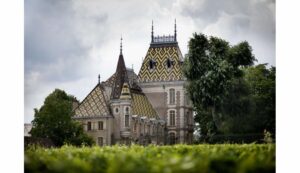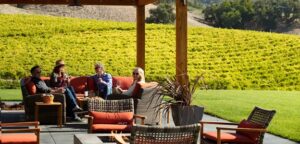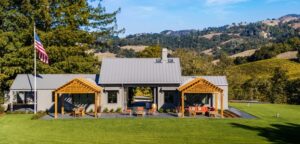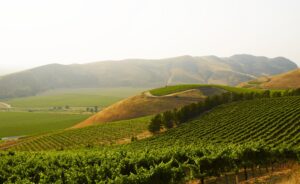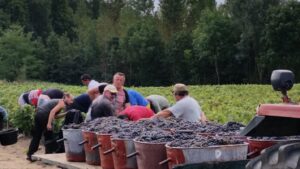Right in the middle of Burgundy’s fabled Côte d’Or, there’s a hill. It’s in the village of Aloxe-Corton, nestled next to Pernand-Vergelesses and Ladoix-Serrigny. For lovers of Burgundy wines, these are not just the place-names of some tiny villages. They’re the names of specific Chardonnays and Pinot Noirs. That hill is also the name of a wine appellation. It’s Corton-Charlemagne.
Charlemagne. Photo courtesy of history.com
No one encourages you to walk through the vineyards atop that hill, but no one stops you either. And when you do, you can tell yourself that you’re walking in the footsteps of Charlemagne. Yes, that Charlemagne, the fellow who was crowned as the first Holy Roman Emperor on New Year’s Day in the year 800. Back in the day – way back – he owned the vineyards atop that hill.
There’s no particular reason to believe that Charlemagne actually trod through the ancestors of these vines. But he could have. And that fact alone allows you to indulge yourself in the ancient history of wine. Today and for time immemorial, they’ve grown Chardonnay there and not just any Chardonnay. These grapes go into the grand cru white wines that bear the name, Corton-Charlemagne. Legend has it that Mrs. Charlemagne wanted him to drink white wine so his beard wouldn’t appear dirty when he drank. Who knows, it’s true.
Okay, you’ve climbed the hill. You’ve walked through the vines. You’ve bathed yourself in history. What do you do next?
For one thing, go back down the hill and visit the wineries in Aloxe-Corton. There’s no shortage of wineries in and around this village. The best known among them are Louis Latour, Corton-Grancey and Corton C. Some of them offer both grand cru whites and reds, which is unique to this little spot along the famous Route des Vins. (Most other Burgundian AOCs have one or the other, but not both.)
Corton C, also known as Corton-André and Pierre André Estates. Photo courtesy of Le Bien Public.
Perhaps more so than any other locale in Wine Country, a major attraction of wine tasting in the Côte d’Or is the architecture. Oh, Bordeaux and the Loire Valley have magnificent châteaux, but they don’t have the roofs like they have in Burgundy. For centuries, the grandees of the region competed with one another in topping their homes with most elaborate tiling and the area around Aloxe-Corton has some of the most inspiring ones.
In particular, you should make a stop at Corton C (formerly Corton André as well as Pierre André and many names before that, over the centuries). It lays claim to the Corton-Charlemagne hill and keeps it in production after all these years. The château was built only in the 19th century, replacing one from the 18th century which sat on top of the 15th century caves. Once again, history flows through everything here.
The elaborately interlaid tiles, polished and resplendent in the sun, make this winery among the most photographed in the world. And not just the roof. The towers and pinnacles give the whole building a fairy-tale quality. You expect to meet princes and dukes when you enter, but it’s only other wine lovers like yourself.

